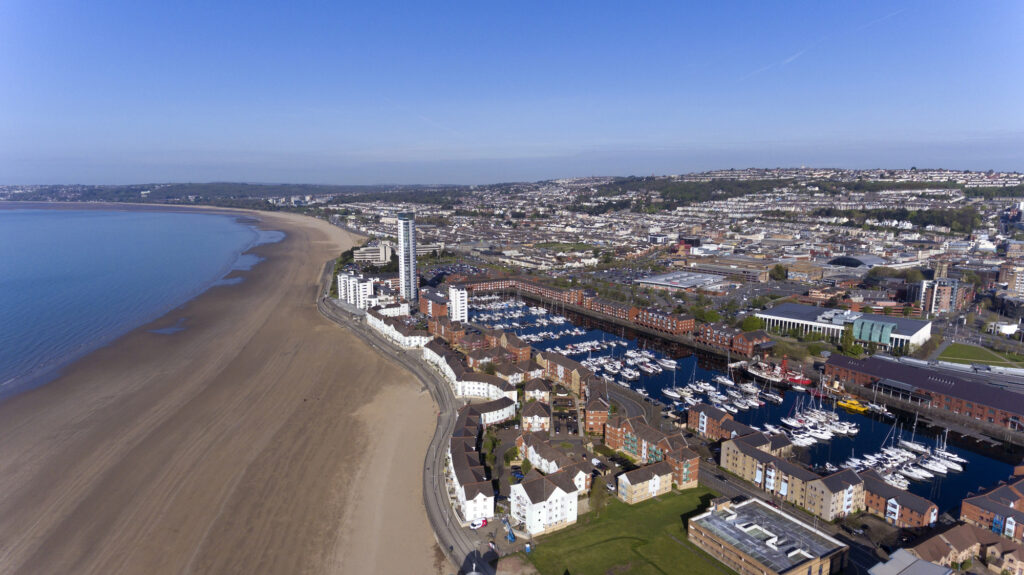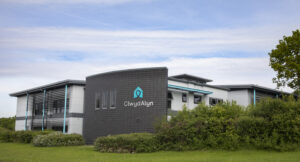“Dangerous blindspot” in Reeves’ Spending Review energy plan, warns Tidal Range Alliance

An aerial view of the Swansea City showing the marina, coastal housing, Leisure centre, Swansea market, County Hall and Meridian Tower. — Photo by Canonfodder
High ambition investment is welcome, but risk mitigation is absent with focus on high risk, untried, technologies
- Major lack of risk evaluation in government’s Spending Review investment plans
- Focus on high-risk technologies a major cause for Net Zero concern
- Tidal Range is the strategic safeguard and should be built now
The Tidal Range Alliance (TRA) has today warned of a glaring blindspot in the UK Government’s high-level energy ambitions, announced by Rachel Reeves in today’s Spending Review.
While the focus on future energy investment is welcome, the Tidal Range Alliance (TRA) points out that there is a major lack of risk evaluation, mitigation, and no credible contingency planning.
The government’s focus on high-risk technologies such as such as hydrogen-fired generation, carbon capture and storage (CCUS), and new nuclear, comes without any clear strategy for managing delays, cost overruns, or delivery failure – according to a new policy paper High Ambition. High Risk. Dangerous Blind Spot, published today by the TRA to co-incide with the Spending Review.
Robin Peters, Tidal Range Development Lead for the TRA, says: “The strategy is bold but is dangerously exposed. The focus and future investment in low carbon technologies is to be applauded, but hydrogen fired generation, carbon capture and new nuclear are all high-risk in terms of technology readiness, supply chains, and delivery timelines.
“That risk is being pushed into the market, without the Government retaining control or providing a credible Plan B.”
Peters points out that: “Tidal Range technology is the Plan B and should be in the mix now. It is a civil infrastructure technology with predictable output, low-risk delivery, and decades of successful generation from existing schemes in France and South Korea.
“Why it has been omitted from the Government’s strategic investment plans is not only baffling but a major energy cause for concern.”
In the Commons, Reeves pointed to more than £30 billion new investment in nuclear; new projects in CCUS and investment in GB Energy, describing it as a “renewal of Britain’s energy security.”
The Tidal Range Alliance is a collaboration of stakeholders in the sector, convened by the British Hydropower Association.
The TRA says the benefits of Tidal Range technologies are:
- Proven and Predictable: Successfully operating since 1966 (La Rance, France).
- Massive Capacity: 20–30GW potential = up to 30 TWh/year, powering 10 million homes.
- System Co-benefits: Flood defence, grid stability, regional regeneration.
- Low Delivery Risk: Ready to deploy using UK-based supply chains and civil infrastructure methods.
Ioan Jenkins, Chair of the TRA, adds: “The Energy Secretary is putting all the UK’s energy eggs in one basket and the plan is far from fool-proof. Does he really expect developers and the market to pick up all the risk?
“The government is essentially outsourcing all responsibility to developers and the markets, ignoring the systemic risk this poses to the UK’s Net Zero trajectory.
“It’s clear from the wind sector that the market is simply not willing to mitigate the risk – and ministers should rightly have the jitters over systemic risk now posed to the UK’s Net Zero trajectory.
“Tidal Range is the strategic safeguard and should be built now.”
—
Image: Deposit Photos — Photo by Canonfodder
An aerial view of the Swansea City showing the marina, coastal housing, Leisure centre, Swansea market, County Hall and Meridian Tower.
(Plans to create a Tidal Lagoon in Swansea Marina, harnessing power from the World’s second highest tidal range have long been proposed, but as yet the plans have not been taken forward.)



